
Awhile ago I discovered another online art treasure, the Smithsonian Archives of American Art, Collections Online. Where digitized material from many important American artists(such as Rapheal Soyer, Jackson Pollack, Milton Avery, Arthur Dove, John Peto and John Singer Sargent names to show the range of artists available) including their writings, letters, photos, drawings and sketchbooks are available for free viewing. Many of the materials are quite extensive so prepare to spend some time. The one drag is that most all of the material has their watermark over it and is a bit intrusive at times.
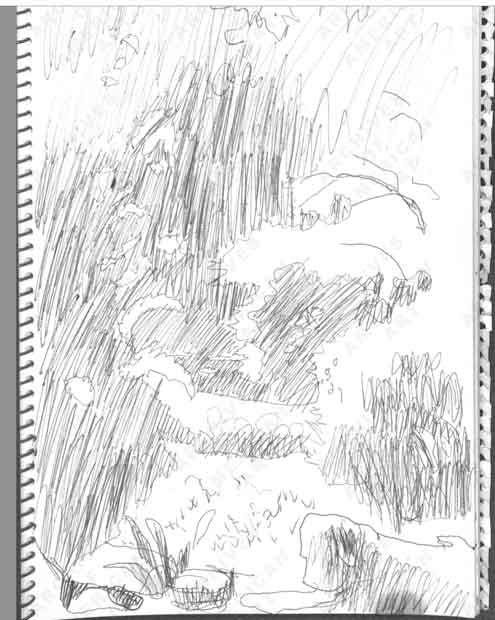
One of my all time favorite painters, Fairfield Porter (1907 – 1975), is included in this collection and has several of his sketchbooks that gives unique insight into his work. Many of Porter’s drawings shown here were no doubt meant to be private “working” drawings, to germinate ideas for paintings where the drawing would be more fully realized with the paint.

I’m not sure Fairfield Porter’s ghost is happy with voyeurs poking around his private life but I found many of his drawings inspirational and informative. At first I thought his drawing to be less advanced than his painting but many of his pencil drawings show amazing colorist sensitivity. In many of his landscape drawings you the light, air and spacial organization is captured with great economy and poetic touch – just enough to gain entry and go further into a painting.
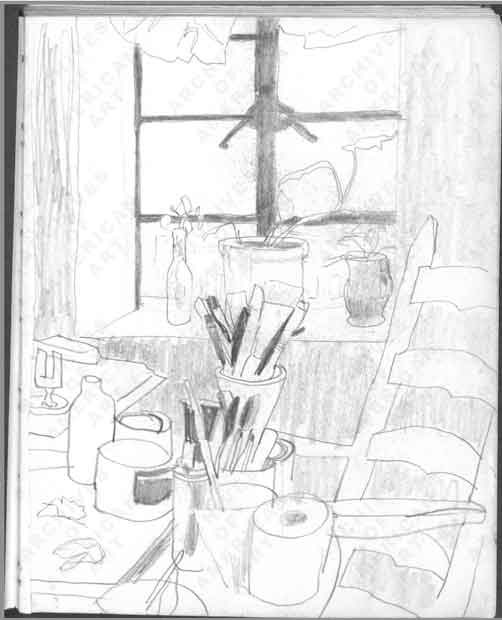
Porter didn’t come from academic training, while he studied art at Harvard his studio training was limited and in many ways he was self-taught. His main influences seemed to be Bonnard and Vuillard and was close to many abstract expressionist painters such as Willem de Kooning. An excellent biography of Fairfield Porter is Justin Spring’s Fairfield Porter: A Life in Art There is an interesting lengthy 1968 interview with Porter by Paul Cummings with many questions about his art training that can be read from this Archives of American Art link.

I will try to return to Fairfield Porter’s paintings in a future post and perhaps discuss one painting in depth.
Here, in no particular order are a few more select drawings from the collection.

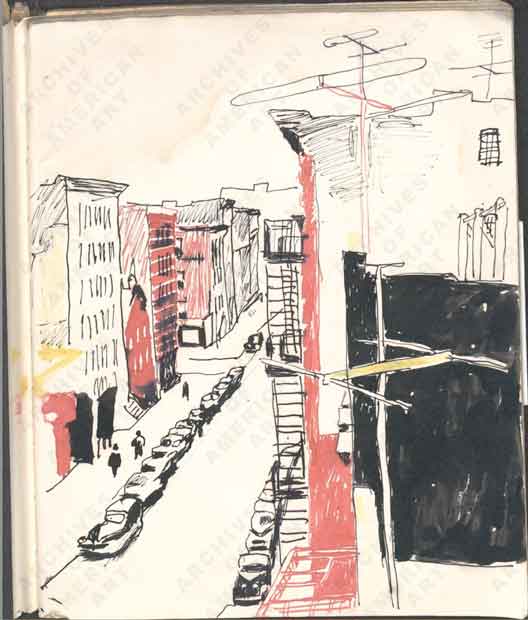
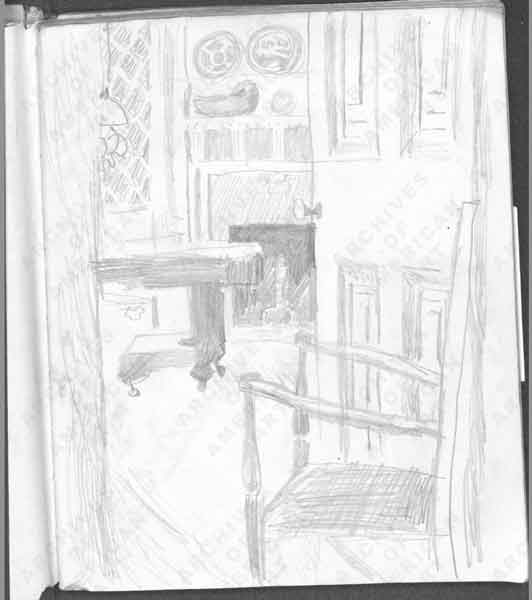
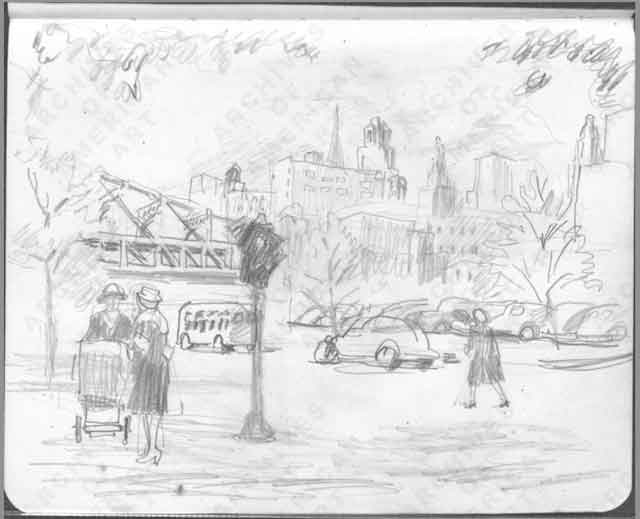
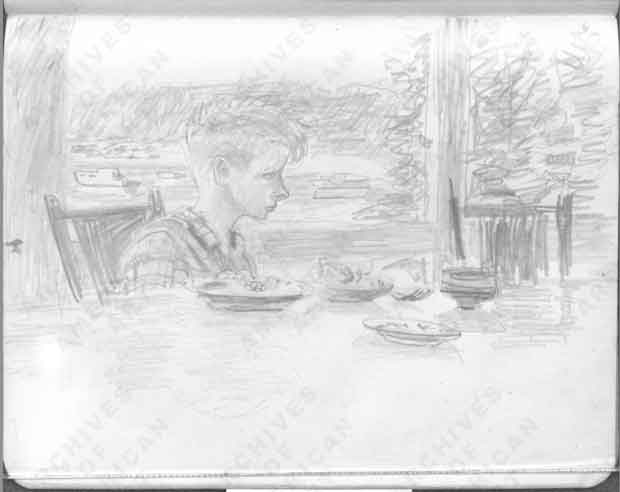
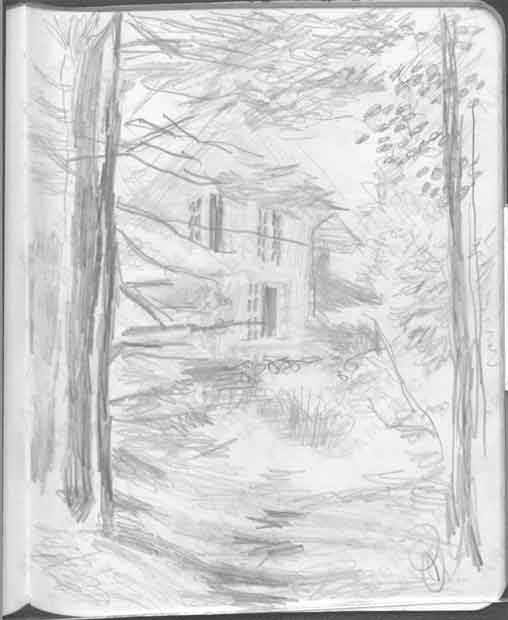





Thanks for sharing these. He’s been a favorite since I first saw his work in art school. He showed a way forward for figurative painters during a time when they were lucky to be thought of as second-class citizens. Also a fine writer, his ‘Art in It’s Own Terms’ was a revelation…
Wonderful posting. A tantalizing glimpse of what paintings might have emerged had Porter lived longer…
wonderfull-one can feel his free hand and the love and joy of sketching
I have to say I prefer his paintings to the drawings, though some of the drawings are good.
Your comments on Porter’s training are appreciated. Perhaps his self-taught qualities are some of his best attributes, but they may also contribute to his erratic output. I think is was a major painter and his best work is very very impressive. But he painted more than his share of misses.
I was hired to teach painting at the Maryland Institute College of Art in 1973. One thing I’m sad about was I missed two big early Porter shows MICA held in its galleries in the 1960’s, when the then President of the Institute, Eugene Leake, had MICA to do these shows. Leake was a friend of Porters (they both came from old money and hit it off) and was a passionate supporter of Porter’s work. Leake himself, a much less known realist painter than Porter, was also a very fine painter and freely admitted how much Porter’s work had influenced him.
I also much prefer his paintings and I think he pushes his drawing much further when he gets to the paint. However, many of his drawings have freshness and charm that hold well on their own. My guess is that he mainly kept his drawing a private affair. It is curious to look behind his curtain a bit here.
For those of us whose drawing skills lack academic polish or maybe lacking in some way on a variety of levels – we can perhaps find solace in that some painters like Porter whose drawings might also lacks academic polish can go on to make some of the most memorable paintings of the 20th century. I think you are right in saying his “self-taught” aspects contribute to his power and originality as a painter, but he taught himself quite a bit! I find his merging of painting from observation with personal interpretations along with his modernist thinking and rich background in art history really make him a major leader in perceptual painting.
Larry,
I completely agree with you about Porter as an example of someone who didn’t wait until all his drawing skills were top notch to try to make important paintings. One could say the same to an extent about Edward Hopper as well, as sometimes his figures in his paintings are a little clunky. But both Porter and Hopper could do some astounding things with color and composition. Of course we should all work on our observational and drawing skills- that never hurts anyone. But sometimes, these two artists tell me, it is good to reach for a “masterpiece” even before you’re completely ready.
Porter and Hopper also had a unique openness to choose sources other painters overlook and make them work. Such a big part of being a painter is offering the viewer something they don’t expect, but then painting it is a convincing way.
Well said Philip, much better than what I said. Reminds me of hearing that Michelangelo was reported to say on his deathbed; “if only I could have been a better painter…”
Not to dis learning one’s observational chops but too often I see painters “stuck” in a mode where they practice making the same boring still-life or whatever over and over in the hope it will eventually make them a better painter – maybe so but what it more often does is to firmly entrench them as a boring painter.
Making “masterpieces”, even if they turn out to be duds, can also be an important part of the learning process.
Carpe Diem!!
thanks for posting these, the drawings and the loooong interview (havent finished reading it)…
about the finish of the drawings..what is really meant? aren’t these drawings so often more ideas for paintings? some are more developed, and others less. The above drawing of the boy in profile at the table is a complete statement. Others are quick sketches. The comparison between the drawings and the paintings is very much like the one between the drawings and paintings of Bonnard. Child-like scribbles and masterful paintings. Porter thinks in terms of color, shape, and mark, as opposed to line, as I see it.
Continue to enjoy the site and all the comments
As a painter who does only some drawing in sketchbooks I wouldn’t classify Porter’s drawings as lacking in skill. Maybe they are “working drawings” that might be done only as preliminary work before painting. They fill (and divide) a rectangle and are very definite compositions. In some he explores the shapes just as his paintings do. But my guess is that they may well just be his own private explorations that relieve him of the hassle of a paintbox and all the stuff one must haul in order to do some art.
Its funny about drawings. I guess many of us have a solo show every couple of years and always fill it exclusively with paintings. Why is that? Is it because we are ashamed of our relative lack of drawing talent/ability? Is it because paintings are more likely to sell for a better price? Is it because people respond to color?
I think making a good drawing is way more difficult than painting. With paint it is much easier to simulate what one observes – light, a colored shape next to some other colored shape, the quality of an edge, etc. With drawing, one cannot simply replicate what one sees.
I still can’t draw a landscape to save my life. I see those Fragonards, Bruegals and Van Goghs and feel like they are on a different planet than me. They really developed drawing as an art form that rivaled their paintings. With these three I like their drawings better than their paintings and it makes sense to see them proudly displayed in gold frames in dimly lit rooms at the Met.
I appreciate seeing Porter’s work in this medium because it seems far more like the kind of struggle that I get into with drawing. He doesn’t have a set of well-honed chops learned in an academy. He went to the Art Student’s League. That’s the closest thing America has to an “Academy”. He simply did not go in for that kind of art. His drawings aren’t being done to put a frame around and sell. You can simply flip through a sketchbook and appreciate them in broad daylight.
Cezanne’s sketchbooks are a great example of drawing for drawings sake. In them, you’ll find the grocery list, numbers being summed, his child’s drawings and also some very beautiful Cezanne drawings.